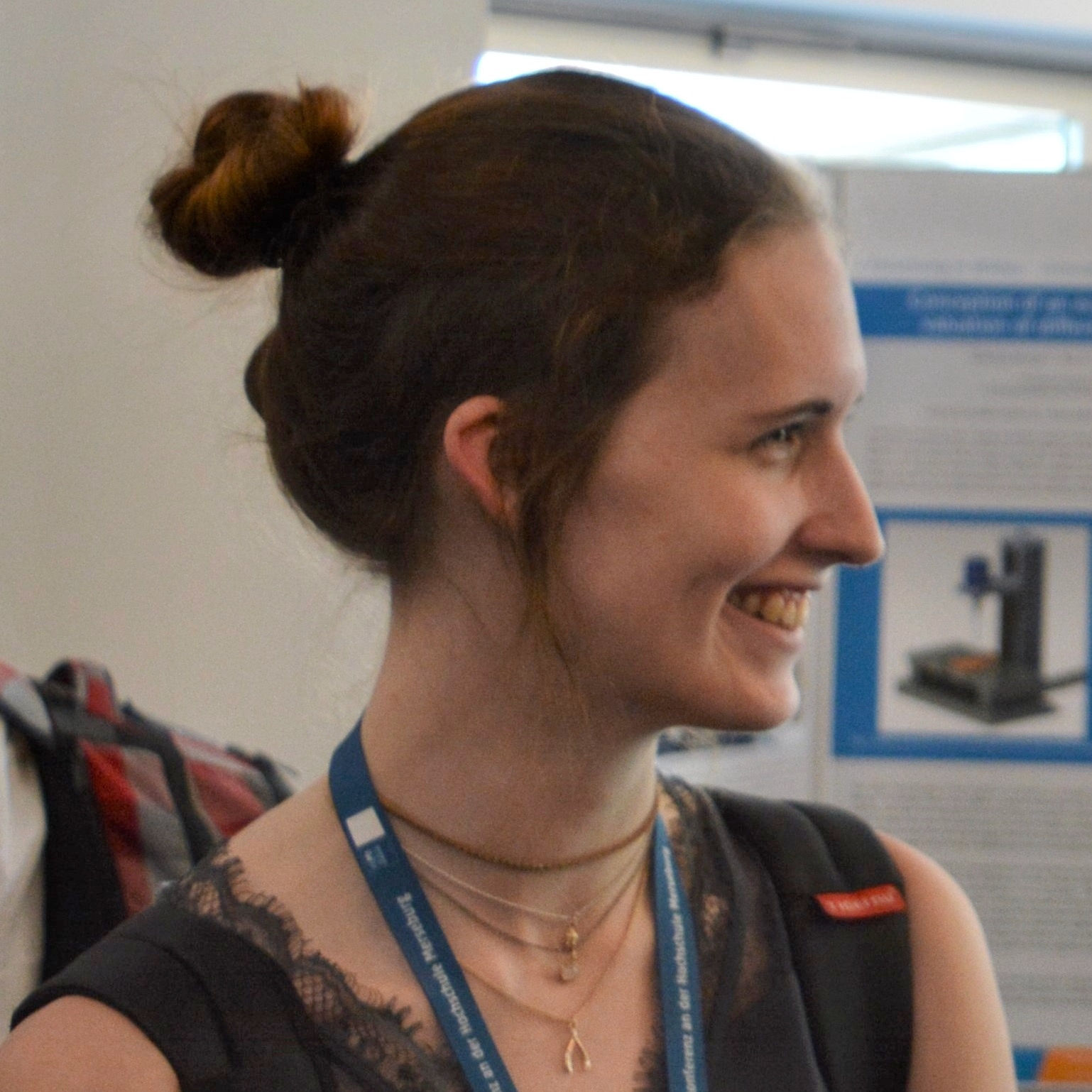Projects spanning both funding phases
Comparative and experimental approaches to the transcriptomics and genomic regulation of eusociality in the sweat bees
Eusociality is a major evolutionary innovation that has independently evolved multiple times across the insects. Using one lineage of halictid bees (Hymenoptera: Halictini) in which eusociality has arisen once, been elaborated upon and subsequently lost repeatedly, we investigated in the preceding project of phase I of GEvol the variation in gene expression and its regulation associated with the gain and subsequent loss of eusociality. Results from this preceding project provide indirect support for the idea that the evolutionary origin of eusociality is rooted in the developmental plasticity of ancestral behavioural traits (working and reproducing), predicted to be coupled in the solitary ancestor and decoupled in the eusocial descendent. Our data suggest that the different social phenotypes that are the hallmark of eusocial systems (queens and workers) might have emerged from evolutionary changes in the way ancient genes are expressed, i.e. from changes in gene regulatory networks. In this follow-up project, we rely again on the socially variable halictid bees for a cross-species comparison of ancestrally solitary, eusocial and derived solitary species to study how shifts in gene expression that we have observed in phase I are regulated, with the aim of understanding the extent to which the origin of eusociality is ascribable to changes in regulatory mechanisms. We intend to: i) identify regulatory elements that act as regulatory switches of gene expression through the integration of deep learning approaches and multi-omics data (RNAseq, ATACseq, CUT&Tag, EMseq); ii) study how these regulatory elements evolved; and iii) investigate the extent to which conserved genes, such as developmental genes and genes involved in sex differentiation, have been co-opted for eusociality. Our proposed study will contribute to a better understanding of the genetic origins of biological novelties, of which eusociality is one of the most intriguing.
Project Team
Emergence, loss and regulation of de novo genes
In recent years, a major shift has occurred in understanding how new proteins arise and gain function. Earlier research assumed that small, adaptive changes in duplicates of established genes led to the evolution of new proteins with new functions. However, recent research showed that new protein-encoding genes can arise ”de novo” from previously non-coding DNA. Although some mechanisms underlying de novo gene emer- gence are now understood, no coherent picture of how and how often novel protein coding genes arise, gain function and spread through a population is available. The aim of this project is to characterise the short and long-term evolutionary dynamics of de novo gene emergence, loss and regulation. This will be done by sequencing genomes and transcriptomes of multiple Drosophila species spanning 3–40 million years of evo- lutionary divergence, including multiple individual genomes per species. This will allow us to precisely pin down the most recent events, such as the emergence of regulatory sequences that may have triggered the expression of an intronic or intergenic region. Including longer time scales will allow us to understand how often protein coding genes are created de novo and how often they are lost – most likely because they had not assumed a sufficiently important function to be retained by selection. Bioinformatic, population genetic and experimental functional genetic analyses will be performed to expand our understanding of how genomes change over time to give rise to new molecular and phenotypic traits.
Project Team
Publications
Grandchamp, Anna; Kühl, Lucas; Lebherz, Marie; Brüggemann, Kathrin; Parsch, John; Bornberg-Bauer, Erich
Population genomics reveals mechanisms and dynamics of de novo expressed open reading frame emergence in Drosophila melanogaster
In: Genome Research, 2023.
Glaser-Schmitt; Amanda, Lebherz, Marie; Sayda, Ezgi; Bornberg-Bauer, Erich and Parsch, John
Expression of de novo open reading frames in natural populations of Drosophila melanogaster
In: Journal of Experimental Zoology Part, 2025
Grandchamp, Anna; Czuppon, Pete and Bornberg-Bauer, Erich
Quantification and modeling of turnover dynamics of de novo transcripts in Drosophila melanogaster
In: Nucleic Acids Research, 2024
Lebherz, Marie; Fouks, Bertrand; Schmidt, Julian; Bornberg-Bauer, Erich and Grandchamp, Anna
DNA Transposons favour de novo transcript emergence through enrichment of transcription factor binding motifs
In: Genome Biology and Evolution, 2024
Ravi, Bharat I.; Grandchamp, Anna and Bornberg-Bauer, Erich
How antisense transcripts can evolve to encode novel proteins
In: Nature Communications, 2024
Evolution of epigenetic regulation in beetles (Coleoptera)
Insects show a remarkable evolutionary flexibility concerning the means by which epigenetic regulation is achieved. Even within the group of beetles (Coleoptera), some species rely on CpG methylation, while other species do not seem to show any functionally relevant levels of CpG methylation. Accordingly, genes encoding DNA methyltransferases (Dnmt1 and 3 genes) have been partially (e.g., Tribolium castaneum) or completely (e.g., Dendroctonus ponderosae) lost in some beetle species. Surprisingly, knock-down of these Dnmt genes can have strong and even lethal effects, even in species lacking CpG methylation, suggesting additional func- tions of DNMTs. On the other hand, it is still unclear, which other epigenetic processes could have replaced CpG methylation in such species.
In vertebrates, histone modification plays a major role in gene regulation. Many core components of the hi- stone modification system are even conserved from animals to plants. Both, histone modification and DNA methylation are global regulators that are mechanistically similar in the sense that they give rise to marks being set along the genome but distinct with respect to their material basis. However, the combined mode of control may range from the mere coexistence to indispensable and rich crosstalk.
Our project thus has the following three main aims: (1) Understanding the evolution of epigenetic regulation systems; (2) Elucidating alternative functions of DNA methyltransferases; (3) Assessing the mutual depen- dences between DNA methylation and histone modification. We will make use of the combined power of bioinformatics, sequencing technology to analyse epigenetic processes (Methyl-Seq, Cut&Tag, RNAseq) and functional validation (RNAi) in ten beetle species. Our project addressing the surprising evolutionary flexibil- ity in something as crucial as epigenetic regulation will thus provide urgently needed basic knowledge of the evolution of epigenetic regulation systems even more generally, beyond insects.
Project Team
Publications
Israel, Elisa; Länger, Zoe M.; Heckenhauer, Jacqueline; Kurtz, Joachim and Projaska, Sonja J.
MBD2/3 lost its methyl-CpG binding ability in multiple families of Holometabola
In: biobxiv 2025,
Länger, Zoe M.; Israel, Elisa; Engelhardt, Jan; Kalita, Agata I.; Keller Valsecchi, Claudia I.; Kurtz, Joachim and Projaska, Sonja J.
Multiomics reveal associations between CpG methylation, histone modifications and transcription in a species that has lost DNMT3, the Colorado potato beetle
In: J Exp Zool B, 2025,
Gene and genome duplication and phenotypic novelties – Insights from spiders and insects
Phenotypic novelties, such as the wings in insects or silk glands in spiders, facilitate adaptations to changing environments and are thus a major driver for evolutionary diversification. Expansion of genomic information by small-scale gene duplications (tandem duplications) or large-scale duplications (chromosomal or whole genome duplications) are important prerequisites for such novelties. Recent genomic analyses of different arthropod groups revealed at least one large scale duplication event at the base of the arachnopulmonates (e.g. spiders and scorpions). This finding provides a unique opportunity to compare the consequences of large-scale duplication events to small-scale duplications commonly observed in insects. Since vertebrates (that underwent several rounds of whole genome duplications), have hitherto been the only animals to study the consequences of large-scale duplication events, new genomic resources in arthropods now facilitate the comparison of large-scale duplication events across different animal groups. Duplicated genes that are bene- ficial for the organism are usually retained in the genome and subsequent diversification of gene expression and function contributes to phenotypic innovations. A systematic genome-wide analysis of gene duplications and their impact on phenotypic novelties is missing in arthropods. Therefore, we will combine comparative genomics, functional genomics and functional genetics approaches to reveal gene retention and gene loss patterns in insects and spiders and to functionally test the impact of gene duplications on phenotypic nov- elties. We will assemble and annotate high-quality reference genomes for underrepresented spider lineages and analyze them together with existing high-quality insect and chelicerate genomes. We will study intron architecture, transposable element content, chromatin accessibility and transcript expression levels to gain insights into the molecular mechanisms underlying the diversification of expression of gene duplicates. For selected gene duplicates we will analyze spatial and temporal expression in developing spider novelties like breathing organs or the silk apparatus, and the function of a subset of genes will be functionally validated via RNA interference mediated gene knock-down. Our work will provide unique insights into the extent, nature and consequences of gene and genome duplications and their importance for the evolution and diversification of phenotypic novelties.
Project Team
Publications
Janssen R, Pechmann M.
Expression of posterior Hox genes and opisthosomal appendage development in a mygalomorph spider.
In: Dev Genes Evol., 2023.
Erdogan, Dugcar E; Karimifard, Shadi; Khodadadi, Mozghan; Ling L; Linke, Luisa; Catalan, Ana; Doublet, Vincent; Glaser-Schmitt, Amanda; Niehuis, Oliver; Nowick, Katja; Soro, Antonella; Turetzek, Natascha; Feldmeyer, Barbara and Posnien, Nico.
ATAC-seq in Emerging Model Organisms: Challenges and Strategies.
In: J Exp Zool B, 2025
Munegowda, Chetan; Pechmann, Matthias; Prpic-Schäper, Nikolai-Michael and Turetzek, Natascha;
Gene and genome duplication in spiders.
In: J Exp Zool B, 2025
Genomic and gene regulatory basis of cuticular hydrocarbon diversification in aculeate Hymenoptera
Evolutionary innovation can result from various mechanisms from genomic to regulatory changes. Evolution- ary innovation is particularly interesting to study complex phenotypic traits that are vital for the organism, yet evolve rapidly. Cuticular hydrocarbon (CHC) profiles represent such a multifunctional trait in insects. CHCs cover the body of all terrestrial insects, protecting against water loss and carrying communicating informa- tion. CHC profiles can differ drastically between closely related species, conspecific sexes, and — in social species — between castes, suggesting a versatile underlying genetic machinery. Despite a generally good understanding of CHC biosynthesis, we still know little about the molecular mechanisms behind intra- and interspecific CHC variation and novel phenotypes. Our project aims to identify the genomic, transcriptomic, and epigenetic underpinnings of CHC diversification. We study 13 pairs of closely related yet chemically dis- tinct species that cover the major lineages of aculeate Hymenoptera (stinging wasps, ants, and bees), and also consider sex and caste differences in some of these species. We are sequencing the genomes of 13 species, and exploit available genomes where possible. Applying a cross-species comparative genomic approach, we will assess the relative importance of gene copy number variation, non-synonymous changes in coding sequences, alternative mRNA splicing, and other regulatory changes for fostering diversification of this multifunctional trait.
Project Team
Genomic evolution of underwater silk in caddisflies (Insecta: Trichoptera) and other freshwater arthropods
Aquatic insects have been neglected in genomic studies. However, they exhibit a suite of ecologically relevant key innovations and adaptive traits, the evolution and genetic background of which remain poorly understood. This project is designed to fill this gap by generating and analyzing genomic data to study the evolution of adhesive underwater silk in Trichoptera (caddisflies) and other (semi-) aquatic arthropods. Caddisflies exhibit the greatest diversity of underwater silk uses. This exciting key innovation has potentially facilitated their radiation across a multitude of different aquatic environments. Further, the unique properties of under water silk (polymerization in aquatic environment, enormous tensile strength, elasticity) makes this system interest- ing for applied sciences. Using a comparative genomics framework and targeting mechanisms such as gene family expansion, selection, presence/absence of genes and variation in gene sequences (e.g. repeat motifs in important silk gene clusters), the project aims to uncover the genomic basis of the evolution of genes and gene families encoding for silk phenotypes in Trichoptera and other freshwater arthropods. Further, by looking at different developmental stages, genetic modulation and regulation of the different properties of silk will be investigated, i.e., the role of gene expression and post-transcriptional modifications (e.g., alternative splicing) and potential methylation patterns in silk genes will be examined. Understanding the genomic evolution and molecular mechanisms of silk production will not only address questions regarding molecular adaptations responsible for the diversification in aquatic environments but also lay the foundation to gauge the potential of underwater silk for biomedical and biotechnological applications.
Project Team
Publications
Deng, X; Kuranishi BR; Pauls , Steffen U.; Frandsen, Paul B. and Heckenhauer, Jacqueline;
De novo whole genome assemblies of unusual case-making caddisflies highlight genomic convergence in the composition of the major silk gene (h-fibroin)
In: J Exp Zool B, 2025
Heckenhauer, Jacqueline., Stewart, Russel J.; Rios-Touma, Blanca; Tshering, Dorji; Frandsen, Paul B. and Pauls U., Steffen
Characterization of the primary structure of the major silk gene, h-fibroin, across caddisfly (Trichoptera) suborders
In: IScience, 2023
Heckenhauer, Jacqueline; Plotkin, David; Martinez, Jose I; Bethin, Jacob; Pauls , Steffen U.; Frandsen, Paul B. and Kawahara, Akito Y.
Genomic resources of two aquatic Lepidoptera, Elophila obliteralis and Hyposmocoma kahamanoa, reveal similarities with Trichoptera in amino acid composition of major silk genes
In: G3 (Bethesda), 2024
Frandsen, Paul B; Hotaling, Scott; Powell, Ashlyn; Heckenhauer, Jacqueline.; Kawahara, Akito Y.; Baker, Richard H.; Hayashi, Cheryl Y.; Rios-Touma, Blanca; Holzenthal, Ralph; Pauls U., Steffen and Stewart, Russel J.
Allelic resolution of insect and spider silk genes reveals hidden genetic diversity
In: PNAS, 2023
Powell, Ashlyn; Heckenhauer, Jaqueline; Pauls, Steffen U.; Ríos-Touma, Blanca; Kuranishi, Ryoichi B.; Holzenthal Ralph W.; Razuri-Gonzales, Ernesto; Bybee, Seth and Frandsen, Paul B.
Evolution of Opsin Genes in Caddisflies (Insecta: Trichoptera)
In: Genome Biology and Evolution, 2025
Sproul, John S.; Hotaling, Scott; Heckenhaauer, Jaqueline; Powell, Ashlyn; Marshall, Dez; Larracuente, Amanda M.; Kelley, Joanna L.; Pauls, Steffen U. and Frandsen, Pauls B.
600+ insect genomes reveal repetitive element dynamics and highlight biodiversity-scale repeat annotation challenges
In: Genome Research, 2023
Standring, Samantha; Heckenhauer, Jaqueline; Stewart, Russel J. and Frandsen, Paul B.
Unraveling the genetics of underwater caddisfly silk.
In: Trends in Genetics, 2025
Revealing the genomic innovations during evolution of holometaboly
Holometaboly is a key innovation within insects and led to a very successful and diverse clade, the holometabolous insects, which have conquered all habitats and include important pests and vectors. However, many aspects
of the evolution of holometaboly remain enigmatic. Do holometabolous larvae correspond to hemimetabolan embryos or nymphs? How did the simplified morphology of first instar larvae evolve? How did immature de- veloping brains become functional in first instar larvae? What is the genetic control of shifted developmental timing (heterochrony)? What genes are specifically required for metamorphosis leading to the pupa, a novel stage? Genetic studies have so far mainly relied on the fly Drosophila melanogaster, which shows a quite derived mode of metamorphosis.
We want to develop and apply a genome-wide bioinformatics approach comparing hundreds of insect genomes to identify genes that show signs of increased sequence evolution at the base of aholometabolous insects. Sub- sequently, we test the functions of the genes emerging from this analysis in the red flour beetle Tribolium castaneum, an insect with insect typical metamorphosis. This approach has become possible only recently, as a large number of high quality insect genome sequences have become available and since genome wide functional screening was established in an insect with typical metamorphosis.
Project Team
Publications
Saenko, Stepan, ; Hoff, Katharina J. and Stanke, Mario
Annotation of 200 Insect Genomes with BRAKER for Consistent Comparisons across Species
In: Preprint, 2025
Synteny-Based Identification of Genomic Innoavations in Insects
Genome architecture in insects varies notably within and between taxonomic groups in terms of size, in- tron distribution, repeat content, and patterns of ancient gene linkage structures. The relationship between these patterns of genome evolution and phenotypic and behavioral diversity of insects is, however, not well understood. Secondarily increased or reduced genomes blurs the link between organismal complexity, and non-adaptive scenarios can explain the emergence of genomic complexity through population-genetic envi- ronments. Establishing a timeline of genome changes across a gradient of evolutionary distances, linked with a functional analysis of identified novelties, is thus essential to understand how genome innovation is linked to phenotypic sophistication.
In our SPP tandem project, we propose to systematically use syntenic conservation as a means of tracking orthology, local duplications, turn-over of repetitive elements, gains and losses of protein domains and coding capacity, and the emergence and decline of non-protein-coding genes. This synteny-based approach will go beyond the construction of reliable, unambiguous genomic alignments and thus overcome existing limits in classical methods of sequence-based gene phylogenies. This will, in particular, allow to unveil the evolutionary history of DNA elements that do not have 1-1 relationships across species, and to disentangle the evolutionary history also at phylogenetic distances that are too large to allow reliable sequence alignments.
To establish a scalable approach that can address innovation across a gradient of evolutionary distances, we will take advantage of the broad taxon sampling in the insect order Diptera (true flies) and its particularly deep sampling of the family Drosophilidae. Fly evolution has been previously characterized by distinct episodes of rapid increase in taxonomic diversity, and coarse comparisons of fly genomes have suggested fly specific innovations in patterning and signaling pathways. We will present the general outline of our project and comment on first results of our approach to catalogue signatures of innovation across 250+ fly genomes.
Project Team
Publications
Käther, K., Lemke, S., Stadler, P.F.
Annotation-Free Identification of Potential Synteny Anchors.
In: Bioinformatics and Biomedical Engineering., 2023.
Remmel, Andreas; Lemke, Steffen and Stadler, Peter.F.
Transiently expressed genes with recent evolutionary origin continue to become enriched at life stage transitions of flies.
In: J Exp Zool B, 2025
The genomic basis of extreme sexual dimorphism in fireflies
Fireflies are well known for their charismatic lighted mating signals. Less known, fireflies exhibit a fascinat- ing variation in sexual dimorphism: some species show very mild sexual dimorphism whereas other species exhibit extreme sexual dimorphism. In species where extreme sexual dimorphism is present, females remain in a neotenic state with wing pads instead of fully developed wings. In some species the light organ is also sexually dimorphic, were males do not have a light organ but neotenic females do. Most importantly, this sexual dimorphism has evolved repeatedly across the firefly phylogeny.
Such strong variation in traits must be caused by underlying gene expression variation. Specifically, sexual dimorphism must be related to sex-biased gene expression. However, it is unknown how sex-biased gene expression evolves and if the same sex-biased genes are shared across the phylogeny. Furthermore, gene expression is most likely regulated by open chromatin accessibility. Nevertheless, the correlation between sex-biased open chromatin accessibility and sex-biased gene expression has not be shown previously.
In this project, we will study the evolutionary forces acting on gene expression using a phylogenetic frame- work. Only within a phylogenetic framework can we distinguish between all scenarios of gene expression evolution, for example, distinguishing directional selection from relaxed stabilizing selection. To address our questions, we will develop new methods and theory for the statistical analysis (Brownian motion and Ornstein-Uhlenbeck processes), specifically focusing on utilizing within-species variance in gene expression and sex-biased gene expression. Our novel methods will allow us to study the evolutionary forces acting on sex-biased gene expression, and if sex-biased gene expression is linked to extreme sexual dimorphism.
We will also generate the first homogeneous gene expression dataset (RNA-seq) for >10 species from at least 5 divergent genera, with multiple individuals per species and separated by body parts. Our study system, fireflies, is ideal for studying sex-biased gene expression evolution due to the repeated evolution of neoteny, but can be used as a reference and comparison to other non-sex-biased datasets too. Additionally, we will use ATAC-seq to generate chromatin accessibility data. With the ATAC-seq data, our project will produce novel insights into the correlation between gene expression evolution and chromatin accessibility evolution on a phylogenetic scale.
Taken together, our project will (a) generate a new comprehensive transcriptomic gene expression and chro- matin accessibility dataset, (b) novel methods to study gene expression and chromatin accessibility evolution for multiple species and individuals across a phylogeny, (c) advance our understanding of genome evolution with regards to the molecular mechanism underlying sexual dimorphism. This knowledge will advance our understanding which genomic elements are driving innovations in insects, such as sexual dimorphism.
Project Team
Publications
A Catalan; D Gygax; L Rodriguez-Montes; T Hinzke; K Hoff and P Duchen
Two novel genomes of fireflies with different degrees of sexual dimorphism reveal insights into sex-biased gene expression and dosage compensation.
In: Communications Biology, 2025










 >
>






























